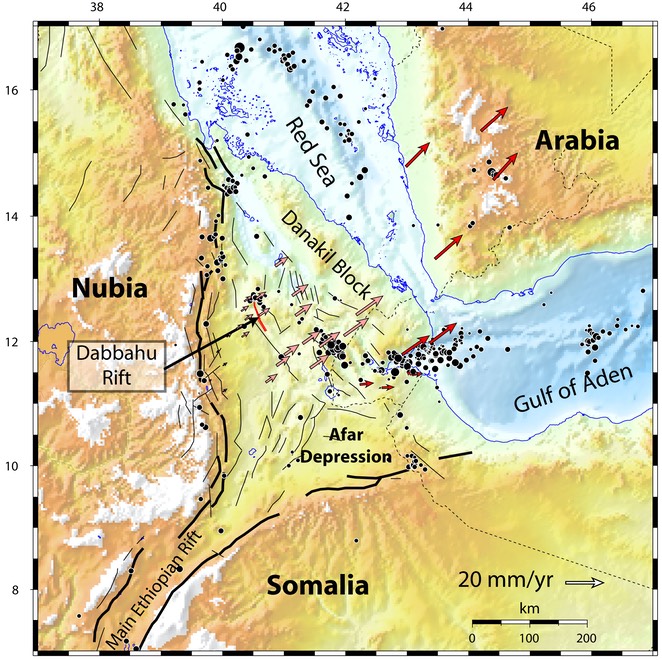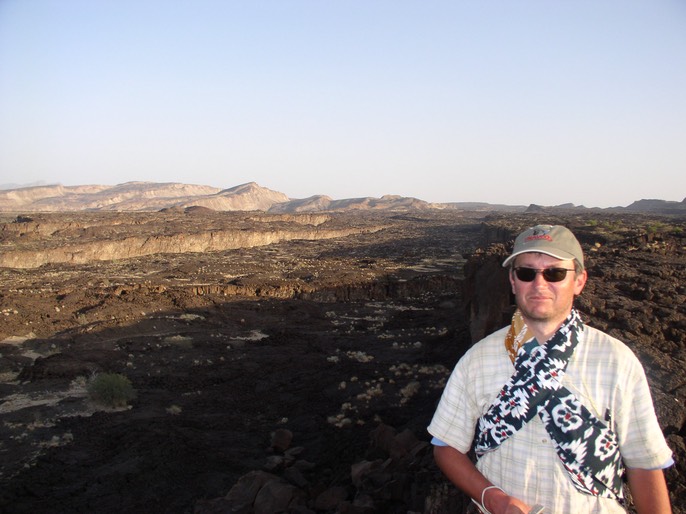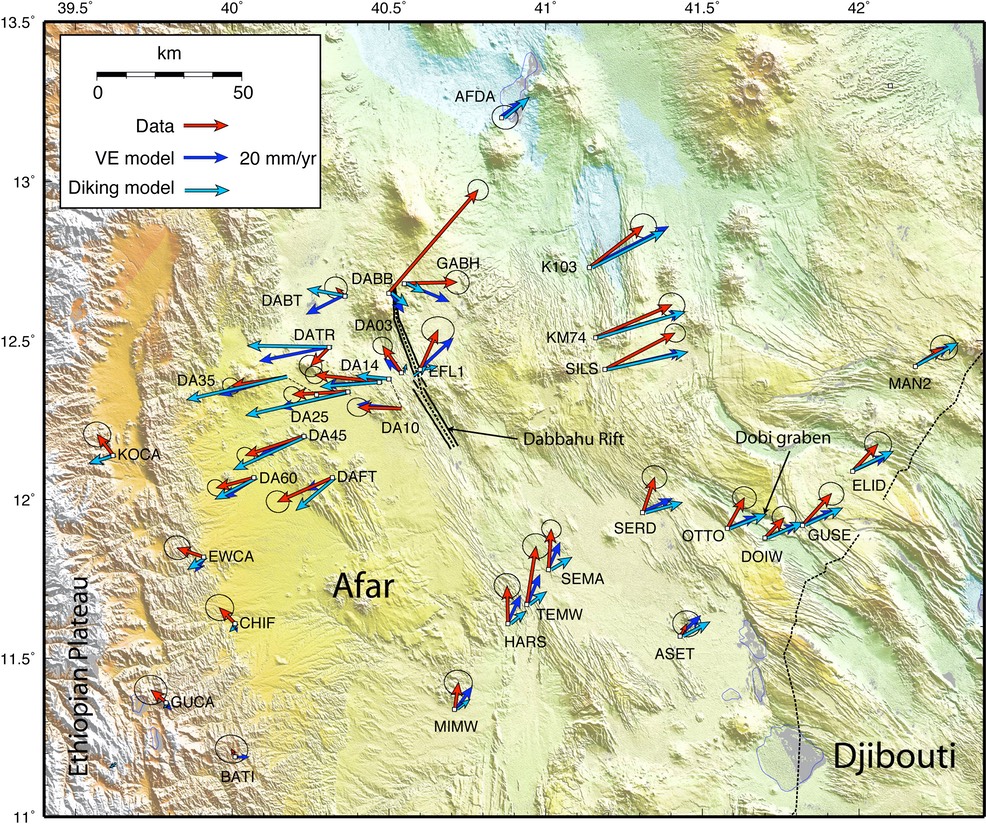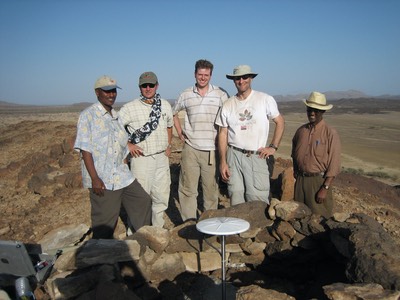Observations at subaerial spreading centers show that tensile stresses from far field plate motions accumulate over decades before being released during relatively short-lived “rifting events”, whose succession eventually achieves plate separation. Crustal accretion at divergent plate boundaries hence occurs via the periodic intrusion of dikes, but their emplacement and the associated deformation are rarely observed.

A major dike intrusion occurred in late September 2005 at the Dabbahu rift, Afar, Ethiopia [Ayele et al., 2007], a segment of the boundary between the Nubian and Arabia (Danakil) plates. InSAR data are consistent with up to 8 m of dike opening and the emplacement of about 2.5 km3 of magma, making this the largest basaltic event observed since the Laki (Iceland) eruption in 1783, and the first to occur in the era of satellite geodesy. Since the initial intrusion, more than 10 smaller dikes (~10 km long), accompanied by migrating seismicity, have intruded the southern part of the Dabbahu segment. Persistent seismic activity has been concentrated at the northern end of the rift under the Dabbahu volcano and along its northern and central segment.

A rapid geodetic and seismic response initiated a record of crustal deformation beginning about 3.5 months after the onset of diking, allowing an unprecedented opportunity to directly observe post-diking processes not accessible at most spreading centers.

